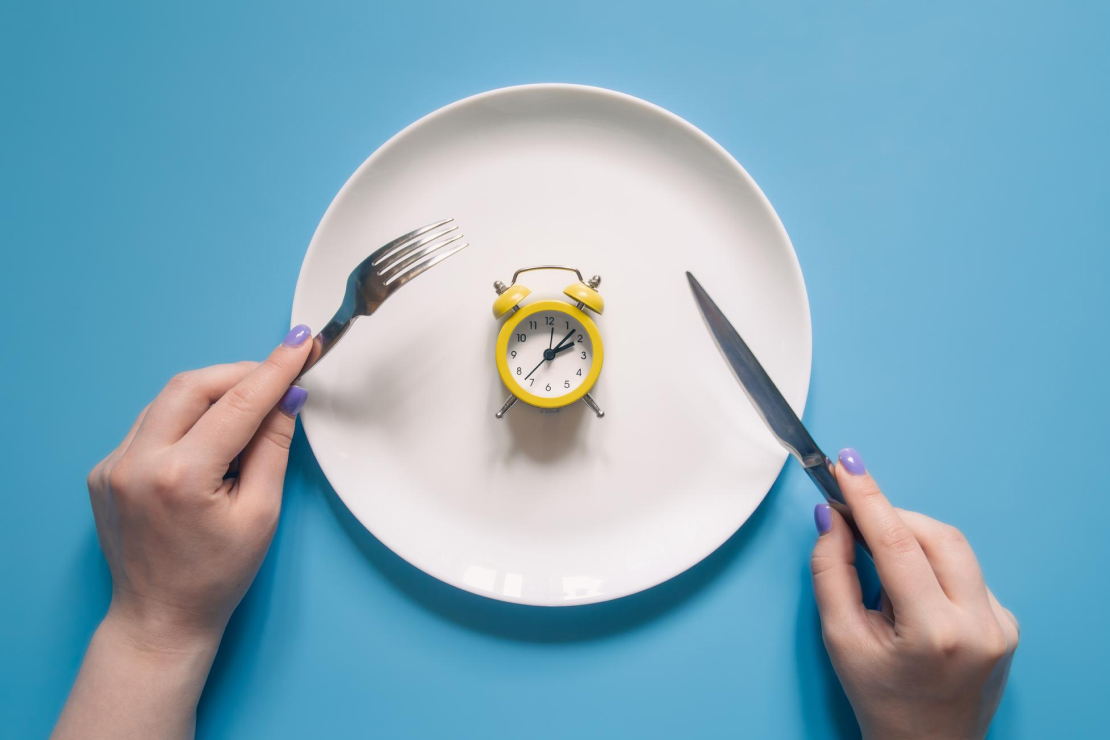Reverse Fasting: Can Eating Early and Fasting at Night Speed Up Fat Loss?
Explore the emerging concept of reverse fasting, where you eat earlier in the day and fast through the evening. Discover its potential benefits for fat loss, metabolic health, and sleep, backed by scientific insights.

Table of Content
Introduction: Flipping the Fasting Script
Intermittent fasting has gained immense popularity for its potential benefits in weight management and metabolic health. While traditional approaches often involve skipping breakfast and eating later in the day, a new concept is gaining traction: reverse fasting. This method flips the script, advocating for eating earlier in the day and extending your fast through the evening and night. But can this unconventional timing truly accelerate fat loss and improve your health?
What is Reverse Fasting?
Reverse fasting, also known as early time-restricted eating (eTRE), is a form of intermittent fasting where your eating window occurs earlier in the day, typically ending in the late afternoon or early evening. This means you consume all your meals within a specific timeframe (e.g., 8 AM to 4 PM or 9 AM to 5 PM) and then fast for the remainder of the day and through the night.
- Eating Window: Typically 8-10 hours, concluding by late afternoon.
- Fasting Period: 14-16 hours, extending through the evening and night.
- Key Difference: Unlike traditional IF (e.g., 16:8 where you might eat from 12 PM to 8 PM), reverse fasting aligns eating with the body's natural circadian rhythm.
The Science Behind Reverse Fasting and Fat Loss
The rationale behind reverse fasting is rooted in chronobiology – the study of circadian rhythms and their impact on our physiology. Our bodies are naturally more metabolically active and insulin-sensitive earlier in the day.
1. Circadian Rhythm Alignment
Our metabolism is not static; it fluctuates throughout the 24-hour cycle. Research suggests that our bodies are most efficient at processing food during daylight hours.
- Insulin Sensitivity: Insulin sensitivity is generally higher in the morning and decreases as the day progresses. Eating earlier means your body can process glucose more efficiently, reducing the likelihood of fat storage.
- Metabolic Rate: Our resting metabolic rate tends to be higher during the day. Consuming calories when your metabolism is naturally more active may optimize energy expenditure.
- Hormonal Harmony: Aligning eating with natural light cycles can support the healthy production of hormones like melatonin (sleep) and cortisol (wakefulness), which indirectly influence metabolism and fat storage.
2. Enhanced Fat Oxidation
By extending the overnight fast, reverse fasting encourages your body to tap into fat stores for energy.
- Longer Fasted State: A longer period without food, especially through the evening, means your body relies more on stored fat for fuel. This can lead to increased fat oxidation.
- Reduced Late-Night Eating: Many people consume excess calories, often from less healthy options, during the evening hours. Eliminating this window naturally reduces overall caloric intake and prevents late-night insulin spikes that can hinder fat burning.
Benefits of Reverse Fasting for Weight Management
1. Natural Calorie Reduction
By simply restricting the eating window to earlier hours, many individuals naturally consume fewer calories without feeling deprived. This is because the evening is often a time of mindless snacking and higher caloric intake.
- Reduced Snacking: Eliminates the opportunity for late-night grazing, which often involves calorie-dense, nutrient-poor foods.
- Improved Satiety: Focusing on nutrient-dense meals earlier in the day can lead to greater satiety, reducing overall hunger later.
2. Improved Metabolic Health Markers
Beyond fat loss, reverse fasting shows promise for overall metabolic well-being.
- Better Blood Sugar Control: Studies on early time-restricted eating have shown improvements in insulin sensitivity and blood glucose levels, particularly beneficial for individuals with prediabetes or type 2 diabetes.
- Reduced Inflammation: Some research suggests that aligning eating with circadian rhythms can help reduce systemic inflammation, a factor often linked to weight gain and chronic diseases.
3. Enhanced Sleep Quality
Eating too close to bedtime can disrupt sleep due to ongoing digestion. Reverse fasting promotes better sleep by allowing the digestive system to rest.
- Restful Digestion: Finishing meals earlier gives your body ample time to digest food before sleep, leading to less discomfort and more restorative rest.
- Melatonin Production: A body not actively digesting food is better able to produce melatonin, the sleep hormone, leading to improved sleep onset and quality.
How to Implement Reverse Fasting
If you're considering trying reverse fasting, here are some practical tips to get started:
- Choose Your Window: Start with an 8-10 hour eating window that ends by 5 PM or 6 PM. For example, 9 AM to 5 PM.
- Gradual Transition: Don't jump straight into a strict window. Gradually shift your last meal earlier by 30-60 minutes each day over a week.
- Nutrient-Dense Meals: Focus on balanced meals rich in protein, healthy fats, and fiber during your eating window to ensure satiety and nutrient adequacy.
- Stay Hydrated: Drink plenty of water, herbal tea, or black coffee during your fasting period to manage hunger and maintain hydration.
- Listen to Your Body: Pay attention to hunger cues, energy levels, and sleep quality. Adjust your window as needed to find what works best for you.
Potential Challenges and Considerations
While reverse fasting offers promising benefits, it's not without its challenges:
- Social Adjustments: Dining out or social events in the evening can be challenging. Planning ahead or communicating your eating window to friends and family can help.
- Initial Hunger: You might experience hunger pangs in the evening initially as your body adjusts. This usually subsides within a few days or weeks.
- Not for Everyone: Pregnant or breastfeeding women, individuals with certain medical conditions (like diabetes requiring medication), or those with a history of disordered eating should consult a healthcare professional before trying any fasting method.
Reverse Fasting vs. Other Fasting Methods
How does reverse fasting compare to more common intermittent fasting protocols like 16:8 or Alternate Day Fasting?
| Method | Eating Window | Primary Focus | Potential Advantage |
|---|---|---|---|
| Reverse Fasting (eTRE) | Early in the day (e.g., 9 AM - 5 PM) | Circadian rhythm alignment, early nutrient processing | Optimized metabolic health, better sleep |
| 16:8 Fasting | Later in the day (e.g., 12 PM - 8 PM) | Extended overnight fast, convenience | Flexibility for social life, appetite control |
| Alternate Day Fasting (ADF) | Eat normally one day, fast/minimal calories next | Aggressive calorie restriction, deeper metabolic shifts | Potentially faster weight loss, significant autophagy |
Conclusion: A Promising Approach to Fat Loss
Reverse fasting presents a compelling, science-backed approach to fat loss and metabolic health by aligning eating patterns with our natural biological rhythms. While it may require some adjustment to social habits, the potential benefits for improved insulin sensitivity, reduced late-night eating, and better sleep quality make it a promising strategy for many.
As with any dietary change, consistency is key. Experiment with your eating window, focus on nutrient-dense foods, and listen to your body's signals. Consult with a healthcare professional before making significant changes to your diet, especially if you have underlying health conditions.
Frequently Asked Questions
Is reverse fasting better than traditional intermittent fasting for fat loss?
Research suggests that reverse fasting (early time-restricted eating) may offer additional metabolic benefits due to better alignment with circadian rhythms, potentially leading to more efficient fat burning and improved insulin sensitivity. However, the "best" method depends on individual adherence and lifestyle.
Can I drink coffee during the evening fast?
Black coffee or plain herbal tea (without milk, sugar, or sweeteners) is generally permitted during the fasting window as it contains minimal calories and does not typically break a fast. However, be mindful of caffeine intake affecting sleep quality.
What should my last meal be during reverse fasting?
Your last meal should be balanced and nutrient-dense, rich in protein, healthy fats, and complex carbohydrates to promote satiety and sustain you through the long fast. Examples include lean protein with vegetables and a small portion of whole grains or legumes.
Will I be too hungry at night?
Initial hunger in the evening is common as your body adjusts. This typically subsides within a few days or weeks as your body adapts to the new eating schedule. Staying well-hydrated and ensuring your last meal is satisfying can help manage hunger.
Start Your Health Journey Today
Download Macro Tracking AI and take control of your nutrition with the power of artificial intelligence.
Download on App Store

